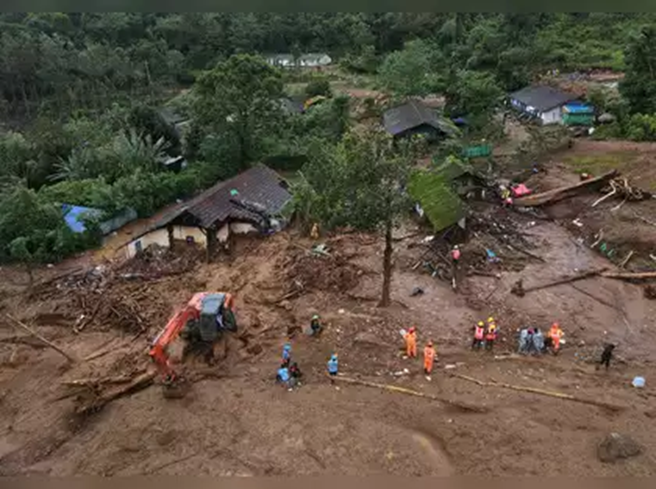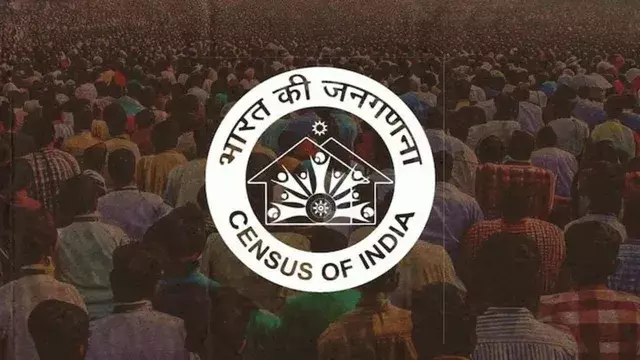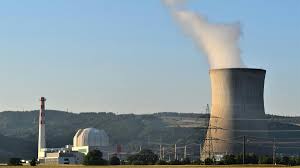- Courses
- GS Full Course 1 Year
- GS Full Course 2 Year
- GS Full Course 3 Year
- GS Full Course Till Selection
- Answer Alpha: Mains 2025 Mentorship
- MEP (Mains Enrichment Programme) Data, Facts
- Essay Target – 150+ Marks
- Online Program
- GS Recorded Course
- Polity
- Geography
- Economy
- Ancient, Medieval and Art & Culture AMAC
- Modern India, Post Independence & World History
- Environment
- Governance
- Science & Technology
- International Relations and Internal Security
- Disaster Management
- Ethics
- NCERT Current Affairs
- Indian Society and Social Issue
- NCERT- Science and Technology
- NCERT - Geography
- NCERT - Ancient History
- NCERT- World History
- NCERT Modern History
- CSAT
- 5 LAYERED ARJUNA Mentorship
- Public Administration Optional
- ABOUT US
- OUR TOPPERS
- TEST SERIES
- FREE STUDY MATERIAL
- VIDEOS
- CONTACT US
Landslides in Wayanad and Related Issues
Landslides in Wayanad and Related Issues
02-08-2024

Recent Events in Wayanad
- Devastating Landslides:
- Wayanad district in Kerala experienced severe landslides due to extreme rainfall and fragile ecological conditions.
- The district received over 140 mm of rain in 24 hours.
- This event recalled the devastating 2018 floods that claimed around 500 lives.
- Climate Change Impact:
- Recent warming of the Arabian Sea has led to deep cloud systems and extremely heavy rainfall in the Western Ghats.
- The rain-bearing belt has shifted, increasing convective rainfall in southern regions like Wayanad.
What are Landslides?
- Downward movement of rock, soil, and debris on a slope.
- Can range from small shifts to large, destructive events.
- Occurs on both natural and man-made slopes.
Types of Landslides:
- Slides: Movement along a rupture surface (rotational and translational).
- Flows: Soil or rock mixed with water moving like a fluid.
- Spreads: Lateral extension and cracking of the mass.
- Topples: Forward rotation and free-fall from a vertical or near-vertical slope.
- Falls: Detachment from a steep slope or cliff.
Causes of Landslides
- Gravitational Forces: Primary cause, constantly pulling materials on slopes downward.
- Natural Triggers:
- Rainfall: Increases soil water content, reducing cohesion and adding weight.
- Earthquakes: Destabilize slopes by shaking the ground.
- Erosion: Natural processes like river or wave action.
- Hydrological Factors: Groundwater movement contributing to risk.
- Anthropogenic Influences:
- Deforestation: Removes natural reinforcement and water drainage.
- Construction and Land Use Changes: Disrupt natural drainage and load distribution.
- Infrastructure Development: Intensifies land pressure and disrupts drainage.
- Geological Factors:
- Composition, structure, and weathering state of materials affect slope stability.
- Defunct Quarries: Contribute to soil destabilization even after ceasing operations.
Landslide-Prone Areas in India
- India's Vulnerability:
- Among the top 5 landslide-prone countries globally.
- About 0.42 million sq. km (12.6% of land area) prone to landslide hazard.
- Distribution of Reported Landslides:
- 66.5% in the Northwestern Himalayas
- 18.8% in the Northeastern Himalayas
- 14.7% in the Western Ghats
- Major Landslide-Prone Regions:
- Northeastern Region (about 50% of total landslide-prone areas)
- Uttarakhand, Himachal Pradesh, and Jammu & Kashmir along the Himalayas
- Maharashtra, Goa, Karnataka, Kerala, and Tamil Nadu along the Western Ghats
- Araku region in Andhra Pradesh along the Eastern Ghats
- Kerala's Vulnerability:
- Nearly 17,000 sq km in Kerala, mostly on the western side of the Western Ghats, mapped as landslide-prone.

Economic Impact
- Economic loss due to landslides may amount to 1% to 2% of the Gross National Product (GNP) in many developing countries.
Comparing Landslides in Western Ghats and Himalayas
|
Western Ghats: |
Himalayas: |
|
|
Challenges Associated with Landslides
- Loss of Life and Injury
- Displacement of Communities
- Damage to Infrastructure
- Economic Impact
- Environmental Degradation
- Difficulties in Predicting Landslides:
- Complexity of Geomaterials
- Insufficient Data
- Identifying Weak Points
- Estimating Size and Runout
- Timing Predictions
- Environmental Variability
- Technological Limitations
Government Initiatives to Mitigate Landslide Risks in India
- National Landslide Risk Management Strategy (2019):
- Comprehensive strategy addressing various aspects of landslide management.
- Landslide Risk Mitigation Scheme (LRMS):
- Under preparation
- Aims to provide financial support for tailored landslide mitigation projects.
- Focus on disaster prevention, mitigation strategies, and research.
- Flood Risk Mitigation Scheme (FRMS):
- Forthcoming scheme for flood preparedness and evacuation.
- National Guidelines on Landslides and Snow Avalanches:
- Issued by National Disaster Management Authority (NDMA)
- Covers various aspects of landslide management.
- Landslide Atlas of India:
- Developed by National Remote Sensing Centre (NRSC) under ISRO
- Documents landslide events in vulnerable areas.
- Disaster Management (Amendment) Bill, 2024:
- Planned introduction in the 18th Lok Sabha
- Aims to create a disaster database at national and state levels
- Provisions for Urban Disaster Management Authority for state capitals and large cities
- Recommendations of Committees on Western Ghats:
- Western Ghats Ecology Expert Panel, 2011 (Madhav Gadgil Committee):
- Declare all of Western Ghats as Ecologically Sensitive Areas (ESA)
- Classify Western Ghats into ESA 1, 2, and 3
- Bottom-to-top governance approach
- Constitute Western Ghats Ecology Authority (WGEA)
- Kasturirangan Committee, 2013:
- Only 37% of total Western Ghats area to be brought under ESA
- Complete ban on mining, quarrying, and sand mining in ESAs
- No thermal power projects; hydropower projects allowed after detailed study
- Ban on highly polluting (Red) industries
- Exclusion of inhabited regions and plantations from ESAs
- Western Ghats Ecology Expert Panel, 2011 (Madhav Gadgil Committee):
Measures to Prevent Landslide Hazards
- Building Resilience:
- Set up sensor networks for real-time monitoring
- Assess rainfall thresholds for soil saturation
- Map potential landslide routes
- Create route maps to mark out-of-bounds areas
- Harnessing Technology for Vigilant Monitoring:
- Utilize web-based sensors (rain gauges, piezometers, inclinometers, etc.)
- Focus on densely populated and urbanized zones
- Integrated Early Warning System (EWS):
- Develop comprehensive EWS using AI and ML algorithms
- Sustainable Socio-Economic Progress:
- Balance resource utilization with ecological conservation
- Environmental Considerations:
- Implement thoughtful urban planning in mountainous areas
- Use retaining walls and restore ecological balance
- Building Codes and Evaluation:
- Map towns and assess load-bearing capacities
- Develop robust building codes for hazard-prone areas
- Enforce strict land use restrictions
- Innovative Techniques:
- Soil Nailing and Hydroseeding:
- Used by Kerala State highways department in the Nilgiris
- Soil nailing reinforces soil
- Hydroseeding promotes plant growth
- Includes planting five grass species and maintaining vegetation
- Soil Nailing and Hydroseeding:
Conclusion:
The Wayanad landslides highlight the complex interplay between natural disasters and human activities. Addressing this issue requires a multifaceted approach involving regulation, education, and scientific research to mitigate risks and protect vulnerable communities. The ongoing efforts and proposed measures represent significant steps towards creating a more resilient and prepared society in the face of landslide hazards.
Must Check: Best IAS Coaching In Delhi
UPSC Prelims Result 2024 Out: Expected Cut Off & Other Details, UPSC Prelims 2024 Answer with Explanation, Daily Prelims Quiz, Daily Current Affairs, MONTHLY CURRENT AFFAIRS TOTAL (CAT) MAGAZINE, Best IAS Coaching Institute in Karol Bagh, Best IAS Coaching Institute in Delhi, Daily Mains Question Answer Practice, ENSURE IAS UPSC Toppers, UPSC Toppers Marksheet, Previous Year Interview Questions, UPSC Syllabus




